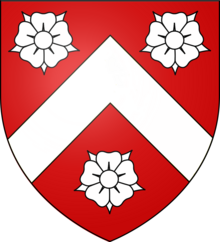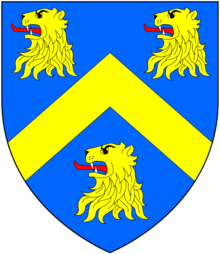
Earl of Ilchester is a title in the Peerage of Great Britain. It was created in 1756 for Stephen Fox, 1st Baron Ilchester, who had previously represented Shaftesbury in Parliament. He had already been created Baron Ilchester, of Ilchester in the County of Somerset in 1741, and Baron Ilchester and Stavordale, of Redlynch, in the County of Somerset, in 1747. These titles were also in the Peerage of Great Britain. All three peerages were created with remainder, failing heirs male of his own, to his younger brother Henry Fox, who was himself created Baron Holland in 1763. The brothers were the only sons from the second marriage of the politician Sir Stephen Fox.

Athelhampton is a settlement and civil parish in Dorset, England, situated approximately 5 miles (8 km) east of Dorchester. It consists of a manor house and a former Church of England parish church. Dorset County Council's 2013 mid-year estimate of the population of the civil parish is 30.

Ilton is a village and civil parish in Somerset, England, situated 8 miles (12.9 km) south-east of Taunton, and 2 miles (3.2 km) north of Ilminster in the South Somerset district. The village has a population of 854. The parish includes the hamlets of Ilford and Cad Green with its 16th-century almshouses.

Branscombe is a village in the East Devon district of the English County of Devon.
The office of High Sheriff of Somerset is an ancient shrievalty which has been in existence since the 11th century. Originally known as the "Sheriff of Somerset", the role was retitled on 1 April 1974, under the provisions of the Local Government Act 1972.

Nicholas Wadham (1531–1609) of Merryfield in the parish of Ilton, Somerset, and Edge in the parish of Branscombe, Devon, was a posthumous co-founder of Wadham College, Oxford, with his wife Dorothy Wadham who, outliving him, saw the project through to completion in her late old age. He was Sheriff of Somerset in 1585.

John Stourton, 1st Baron Stourton of Stourton, Wiltshire, was an English soldier and politician, elevated to the peerage in 1448.

Dorothy Wadham was the foundress of Wadham College, Oxford. She has the distinction of being the first woman who was not a member of the Royal Family or titled aristocracy to found a college at Oxford or Cambridge. Her husband was Nicholas Wadham (1531-1609) of Merryfield in the parish of Ilton, Somerset and of Edge in the parish of Branscombe, Devon.

Sir John Wyndham, JP, of Orchard Wyndham in the parish of Watchet in Somerset, was an English landowner who played an important role in the establishment of defence organisation in the West Country against the threat of Spanish invasion.
Florence Wyndham (1538-1596), wife of Sir John Wyndham of Orchard Wyndham in Somerset, was a daughter of John Wadham of Merryfield, Ilton in Somerset and Edge, Branscombe in Devon and was a sister and co-heiress of Nicholas Wadham, co-founder of Wadham College, Oxford.
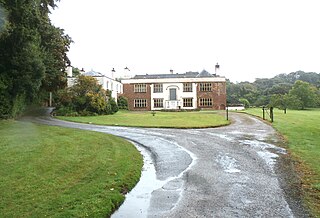
Orchard Wyndham is a historic manor near Williton in Somerset, centred on the synonymous grade I listed manor house of Orchard Wyndham that was situated historically in the parish of Watchet and about two miles south of the parish church of St Decuman's, Watchet. Parts of the manor house are medieval. It has been owned for more than 700 years by the prominent Wyndham family, who continue there as of 2015.

Knowstone is a village and civil parish situated in the North Devon district of Devon, England, halfway between the Mid Devon town of Tiverton, Devon and the North Devon town of South Molton. The hamlet of East Knowstone lies due east of the village. Knowstone was the birthplace of Admiral Sir John Berry (1635–1691), second son of Rev. Daniel Berry (1609–1654), vicar of Knowstone cum Molland. An elaborate mural monument erected by Sir John in 1684 to the memory of his parents survives in Molland Church.
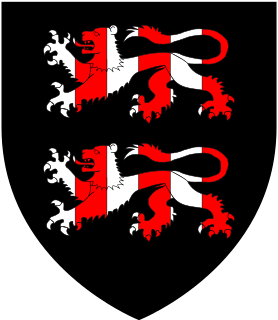
Giles Strangways of Melbury House in Somerset, was an English politician who sat in the House of Commons variously between 1640 and 1675. He fought on the Royalist side during the Civil War

Sir Giles Strangways, of Melbury Sampford, Dorset, was five times MP for Dorset in 1553, 1554, 1555, 1558 and 1559.

Sir John Young, of The Great House, Bristol, of London and of Melbury Sampford, Dorset, was an English politician.
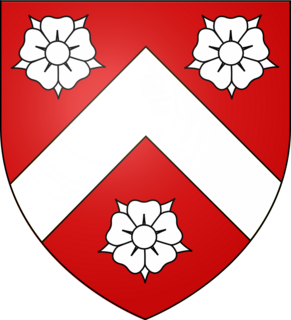
Sir Nicholas Wadham was an English high sheriff, Royal Navy administrator and Member of Parliament. He was the grandfather of Wadham College, Oxford posthumous co-founder Nicholas Wadham (1531–1609).

Merryfield is a historic estate in the parish of Ilton, near Ilminster in Somerset, England. It was the principal seat of the Wadham family, and was called by Prince their "noble moated seat of Meryfeild" (sic). The mansion house was demolished in 1618 by Sir John Wyndham (1558–1645), of Orchard Wyndham, a nephew and co-heir of Nicholas II Wadham (1531–1609), co-founder of Wadham College, Oxford, the last in the senior male line of the Wadham family. It bears no relation to the present large 19th-century grade II listed mansion known as Merryfield House, formerly the vicarage, immediately south of St Peter's Church, Ilton.

The manor of Wadham in the parish of Knowstone in north Devon and the nearby manors of Chenudestane and Chenuestan are listed in the Domesday Book of 1086:

Sir William Wadham (c.1386–1452) of Merryfield in the parish of Ilton, Somerset and Edge in the parish of Branscombe, Devon came from a West Country gentry family with a leaning towards the law, who originally took their name from the manor of Wadham in the parish of Knowstone, between South Molton and Exmoor, north Devon.

Sir John Wadham (c.1344–1412) was a Justice of the Common Pleas from 1389 to 1398, during the reign of King Richard II (1377–1399), selected by the King as an assertion of his right to rule by the advice of men appointed of his own choice, and one of the many Devonians of the period described by Thomas Fuller in his Worthies of England, as seemingly "innated with a genius to study law".


